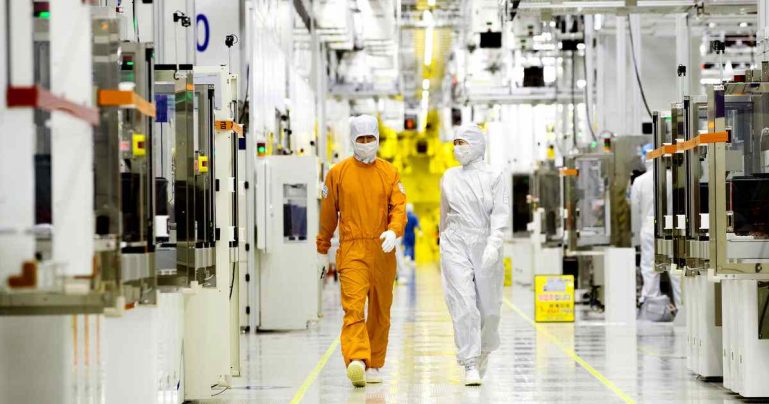India to Soon Start Semiconductor Manufacturing and Production

India is on a mission to become a world leader in the semiconductor industry. It’s aiming to build a local chip supply chain to help it compete against the likes of China and the US.
It’s also focusing on supporting indigenous talent. But if India wants to build a chip manufacturing ecosystem, it will need access to raw materials and energy.
1. Tata Group
Tata Group is one of India’s largest conglomerates and has interests spanning multiple business sectors. The Group’s products and services have been a part of the lives of millions across the world.
In an interview with Nikkei Asia, Tata Sons Chairman Natarajan Chandrasekaran said that the company plans to soon start semiconductor manufacturing and production in India. He added that this will help the country to be a key part of global chip supply chains.
He also said that the company is planning to invest $90 billion over the next 5 years. This will be used for new businesses such as EVs and batteries, renewable energy, and development of “super apps.”
The move to build a chip-making facility is expected to be a major step in the Indian government’s effort to make India a leader in chip production and reduce its dependence on imports. Several international chip makers are exploring India as a potential manufacturing base.
2. Vedanta-Foxconn
India plans to soon start semiconductor manufacturing and production. This comes as the country aims to reduce its dependence on expensive imports from overseas.
The government has also approved incentives to help set up fab units. The Modi government is offering sops worth Rs 76,000 crore ($10 billion) spread over six years.
These subsidies are meant to make India attractive to foreign companies seeking to develop semiconductor fabs, which have been a key focus of the Modi government’s Atma Nirbhar Bharat (self-reliant India) scheme.
But while these incentives are good news for those looking to invest in the semiconductor industry, it’s important to note that they won’t be enough if they don’t generate business. For instance, the plant will need to source raw materials, produce chips for both domestic consumption and export, and fill orders.
These requirements will need to be carefully addressed by the India Semiconductor Mission in order to ensure that its efforts are not wasted.
3. IGSS Ventures
In December last year, the government launched an incentive scheme to promote investment in semiconductor fabs. It has received three proposals from the International Semiconductor Consortium (ISMC), Vedanta-Foxconn and IGSS Ventures.
A proposal by Singapore-based IGSS Ventures, which submitted its project under the name “Project Suria”, has been chosen to begin its manufacturing cluster in Tamil Nadu. Its 40,000 wafer capacity will enable production of 28-55 nanometre chips for use in mobile devices, power and automotive applications.
The government has also raised fiscal support for new semiconductor facilities to cover 50% of their costs, and will remove a ceiling on maximum permitted investment. It expects the total investments to be at least $25 billion.
Minister of State for Electronics and IT Rajeev Chandrasekhar said on Wednesday that the government would start approving proposals to set up semiconductor manufacturing plants in the next 30-60 days. It will provide fiscal support, purchase preference and a range of incentives for the greenfield fabs.
4. ISMC
The international semiconductor consortium ISMC plans to soon start semiconductor manufacturing and production in India. The project will involve the construction of a 65-nanometer analog chip fab that would employ 1,500 people. The plant is expected to be operational within a span of 4-5 years from the time it begins construction, according to reports.
ISMC, a joint venture between Abu Dhabi-based Next Orbit Ventures and Israel’s Tower Semiconductor, will set up the chip factory on 150 acres of land in Mysuru’s Kochanahalli Industrial area. The facility is to be supported by government incentives, which will include tax breaks for the investors.
The central government has been offering various incentives for the development of the semiconductor and display manufacturing ecosystem in India. These include varying degrees of fiscal support, which range from 30-50 per cent.
